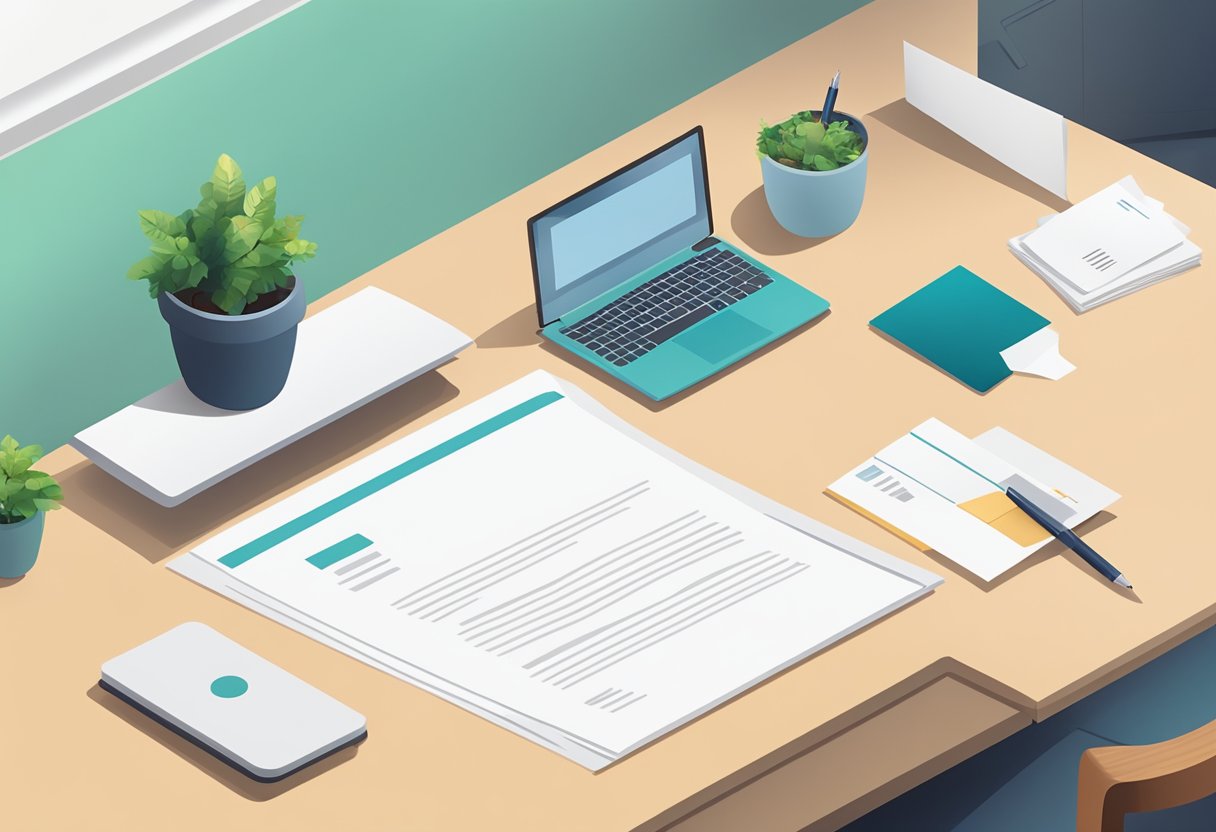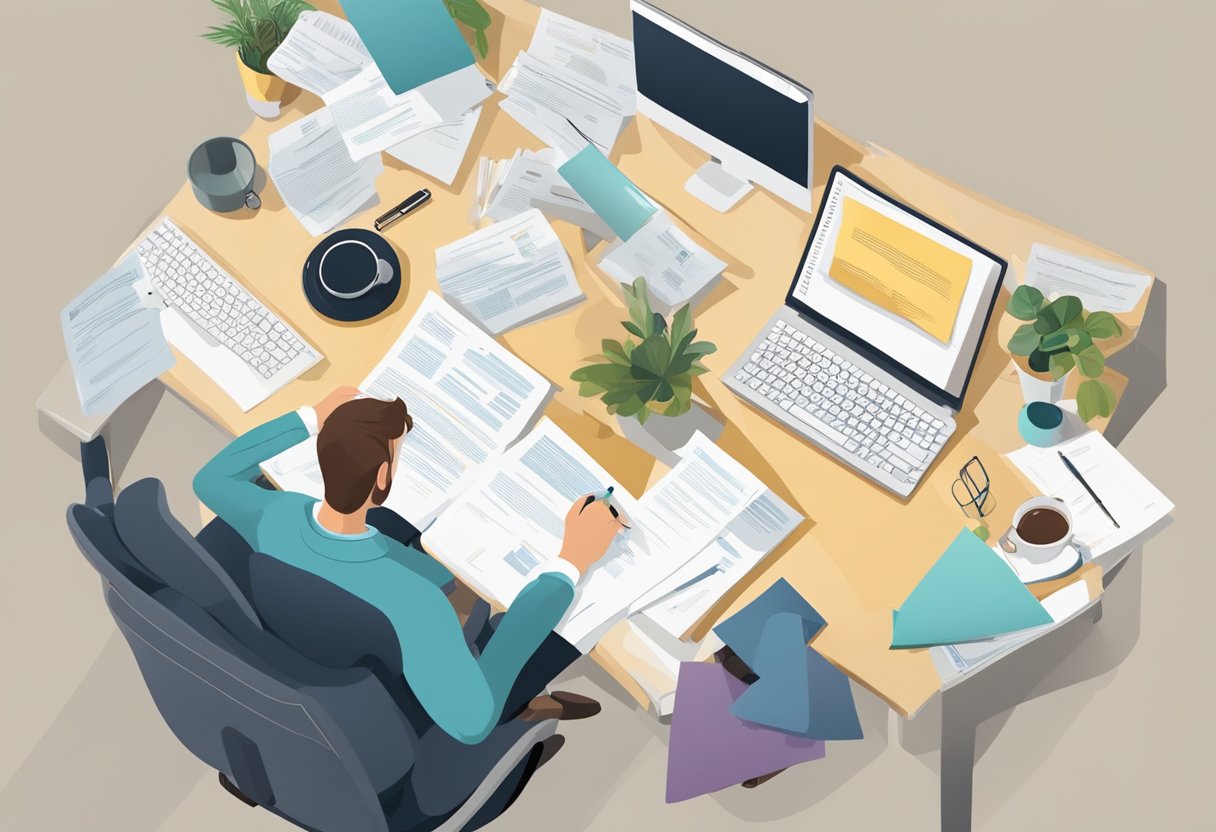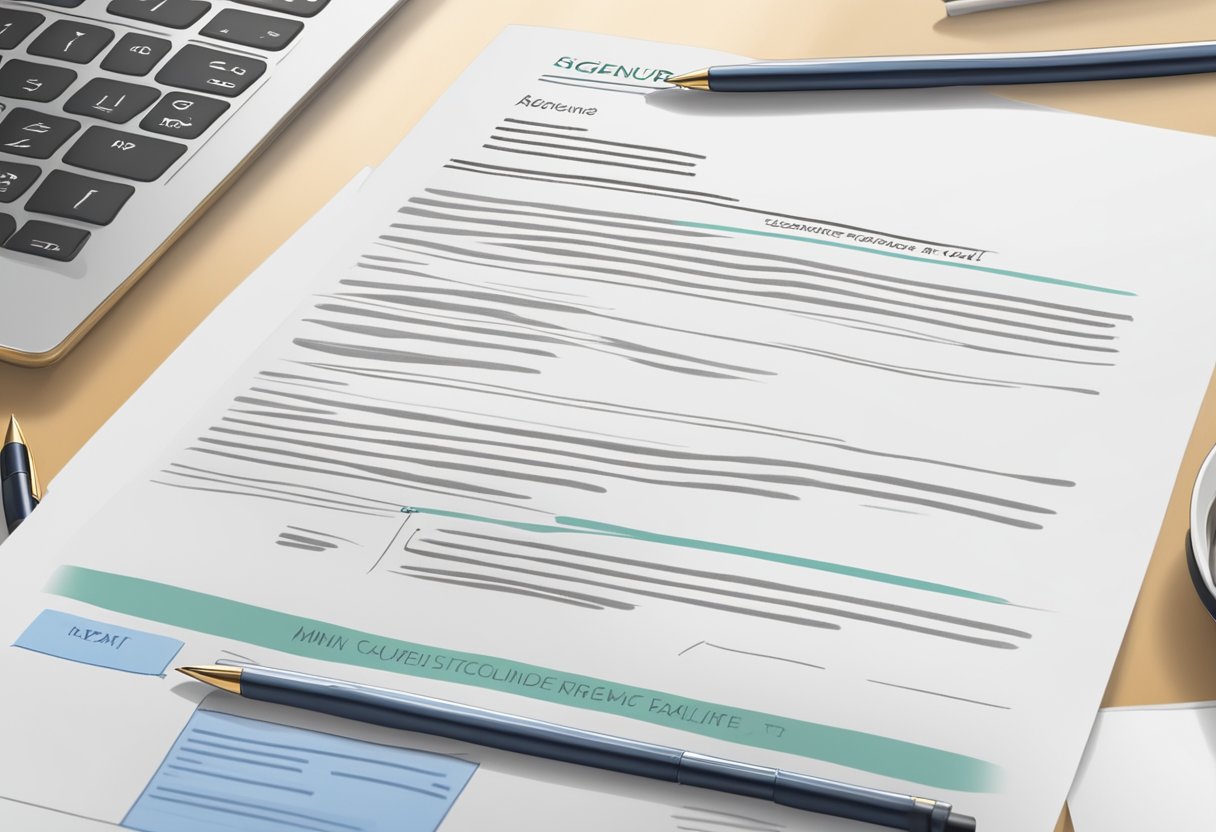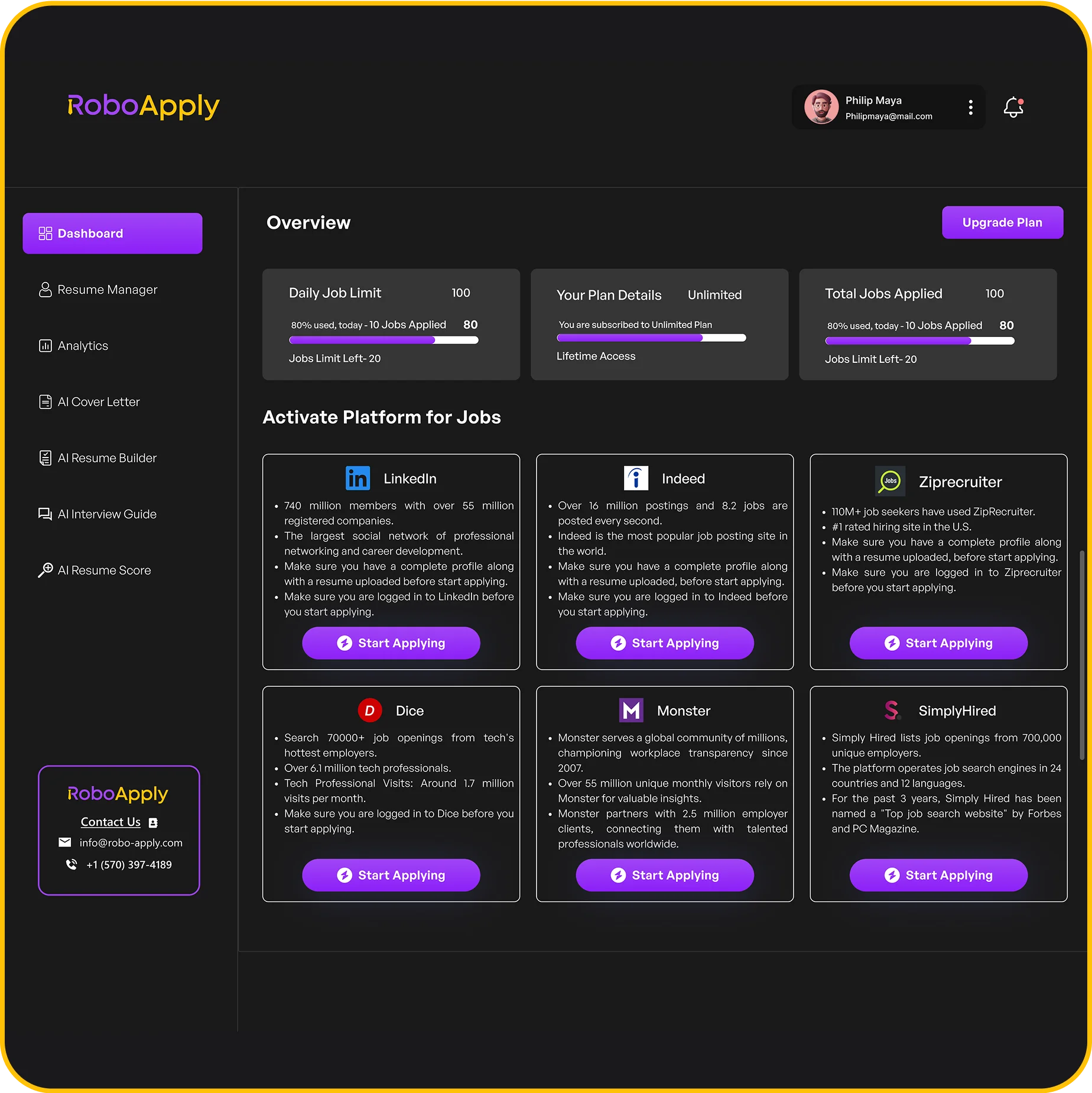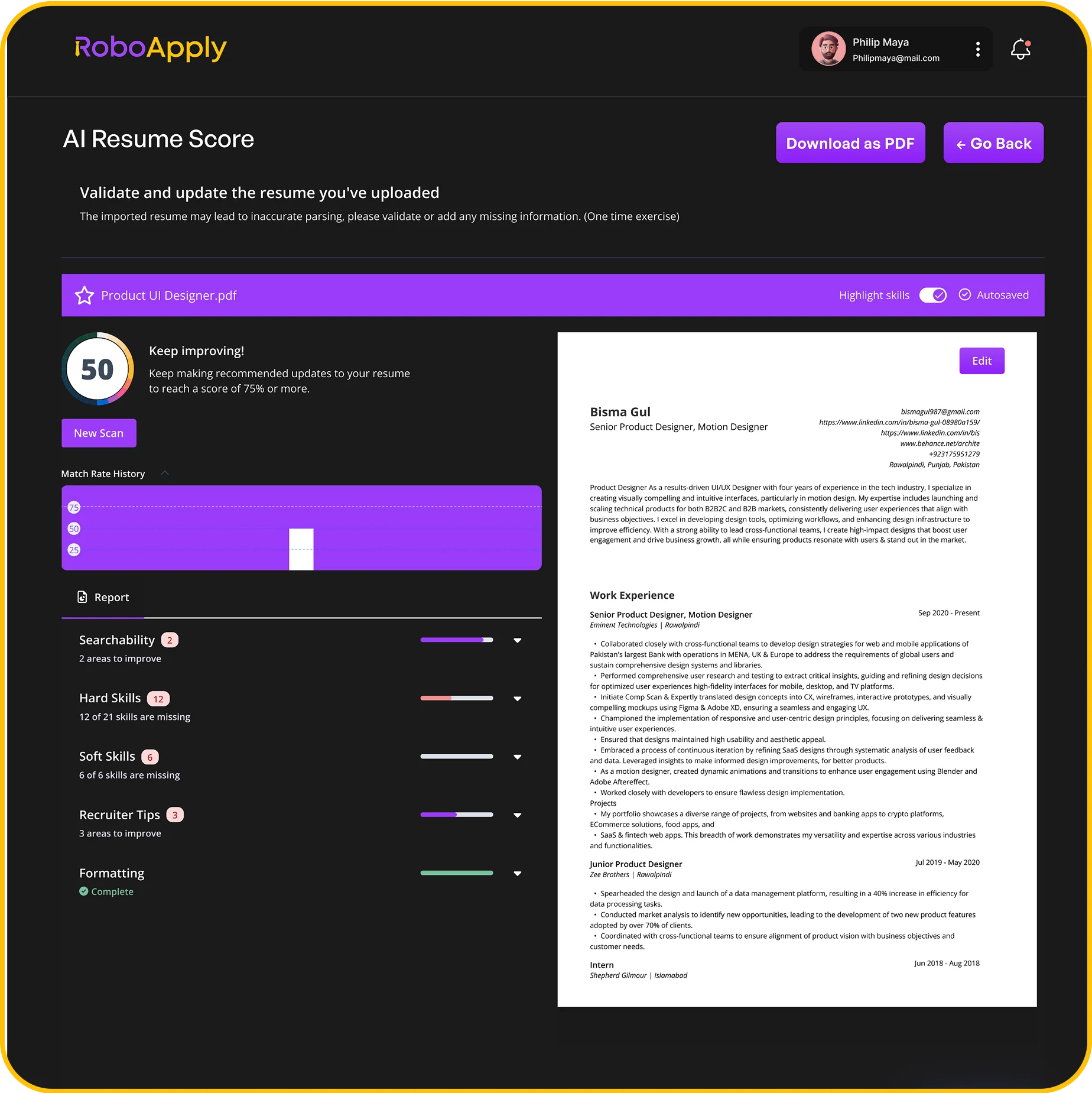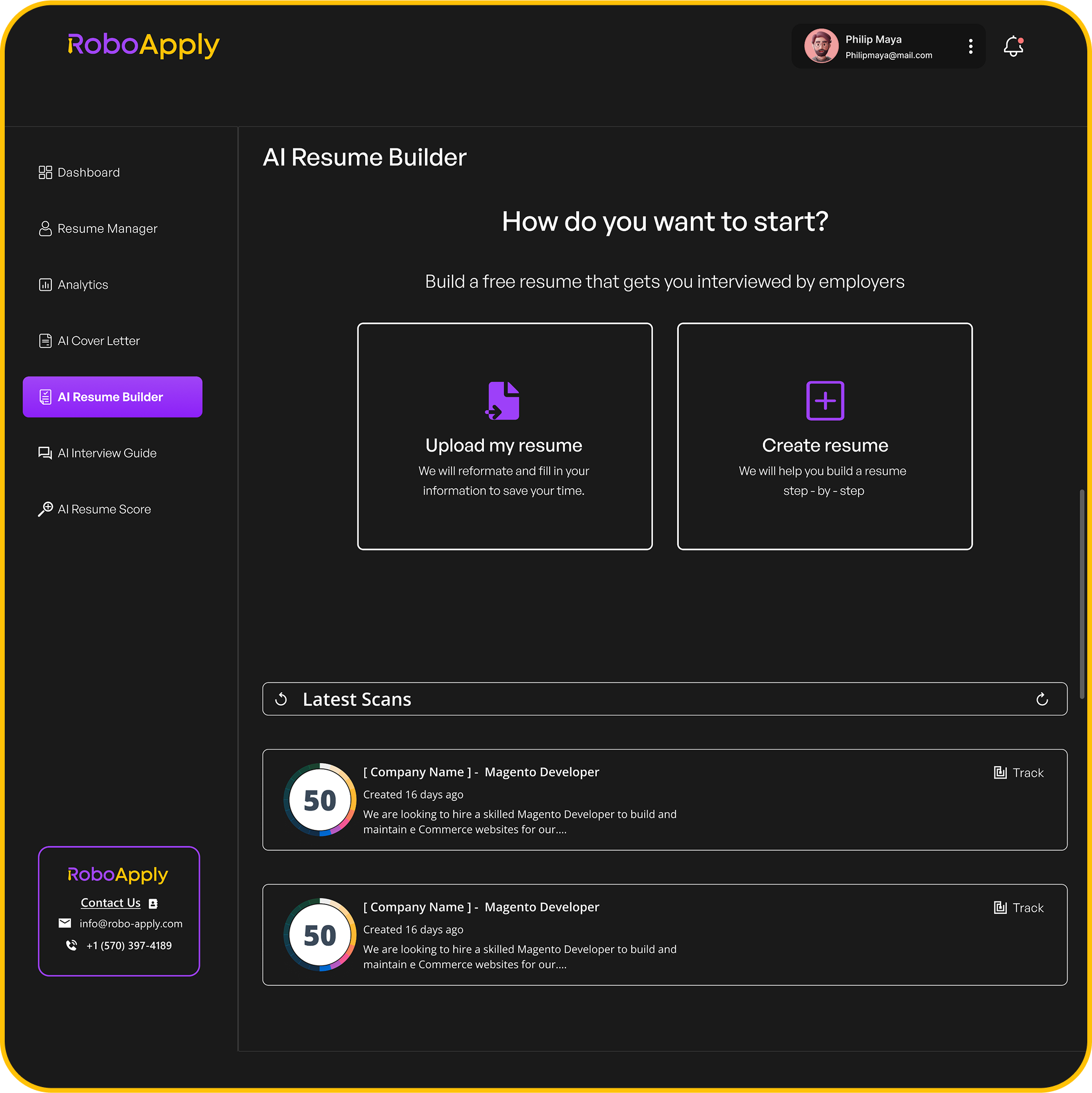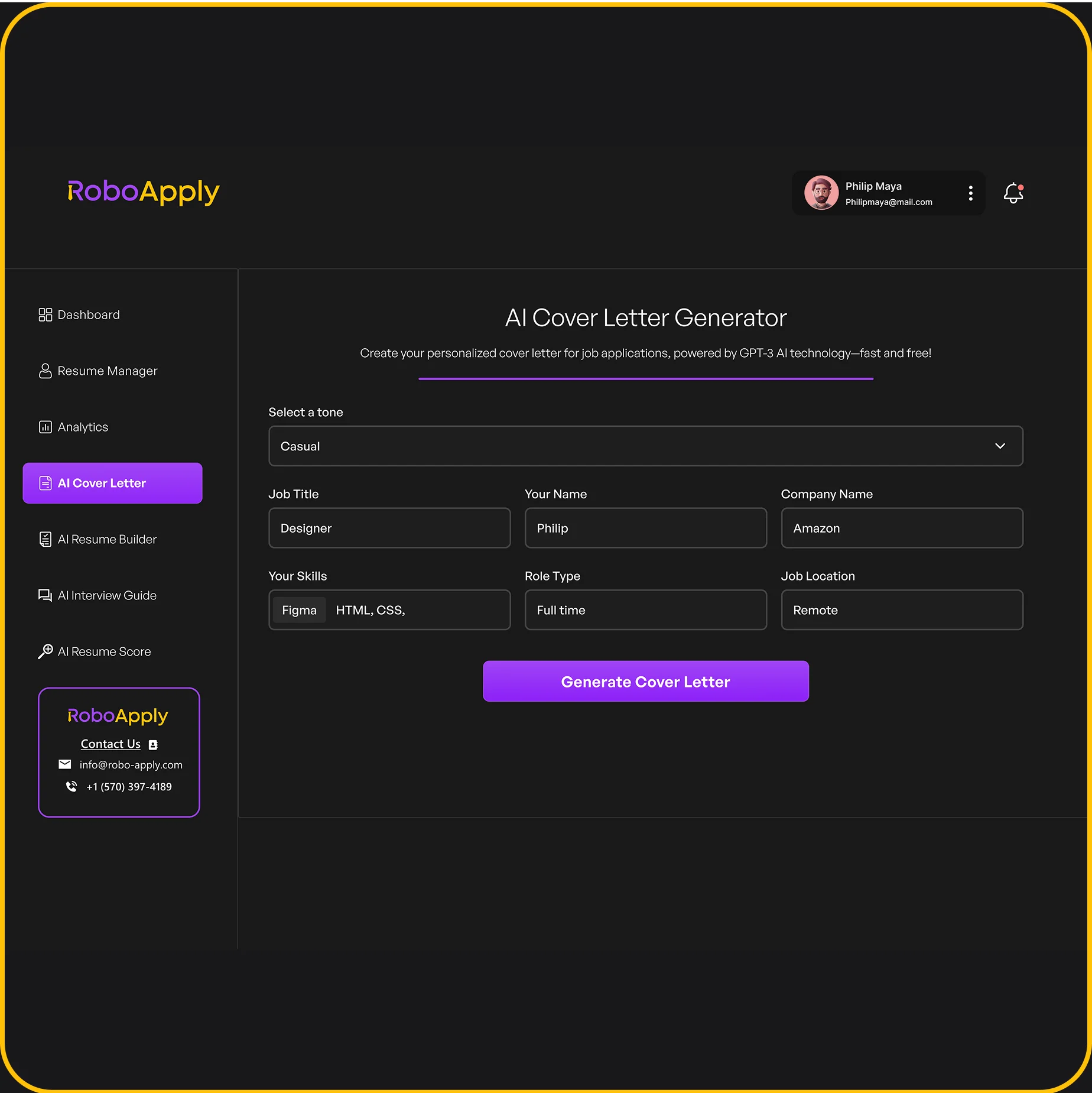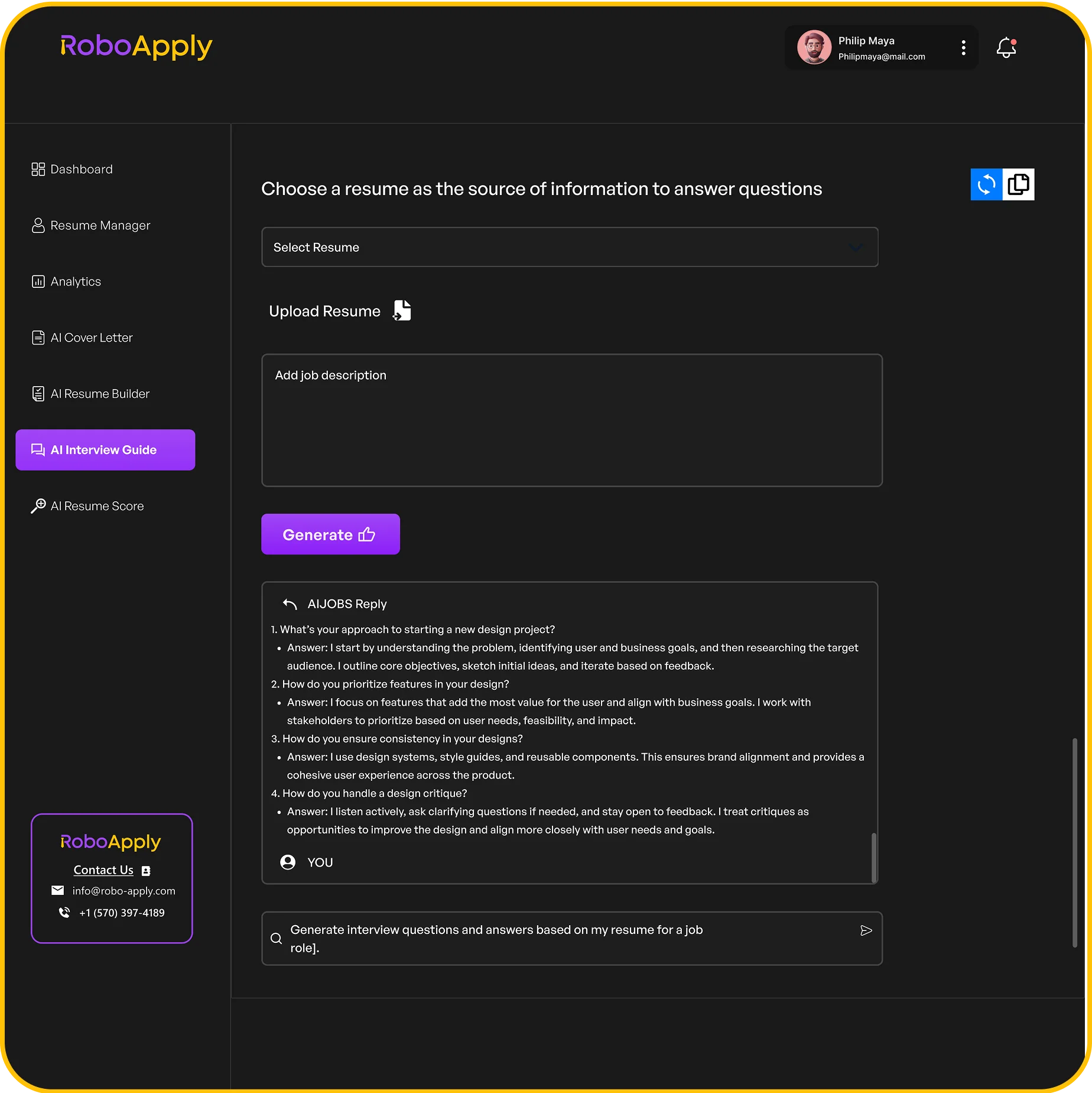When it comes to cover letters, you’d be surprised how many people forget to make it obvious they actually want to move forward in the hiring process. The trick to successfully asking for an interview in a cover letter? Just say it—confidently. Make your interest and request for a meeting clear in your closing paragraph. That little nudge tells hiring managers you’re not just tossing out applications—you’re serious, and you’re ready to take the next step. This approach can set you apart from the sea of resumes landing in their inbox.
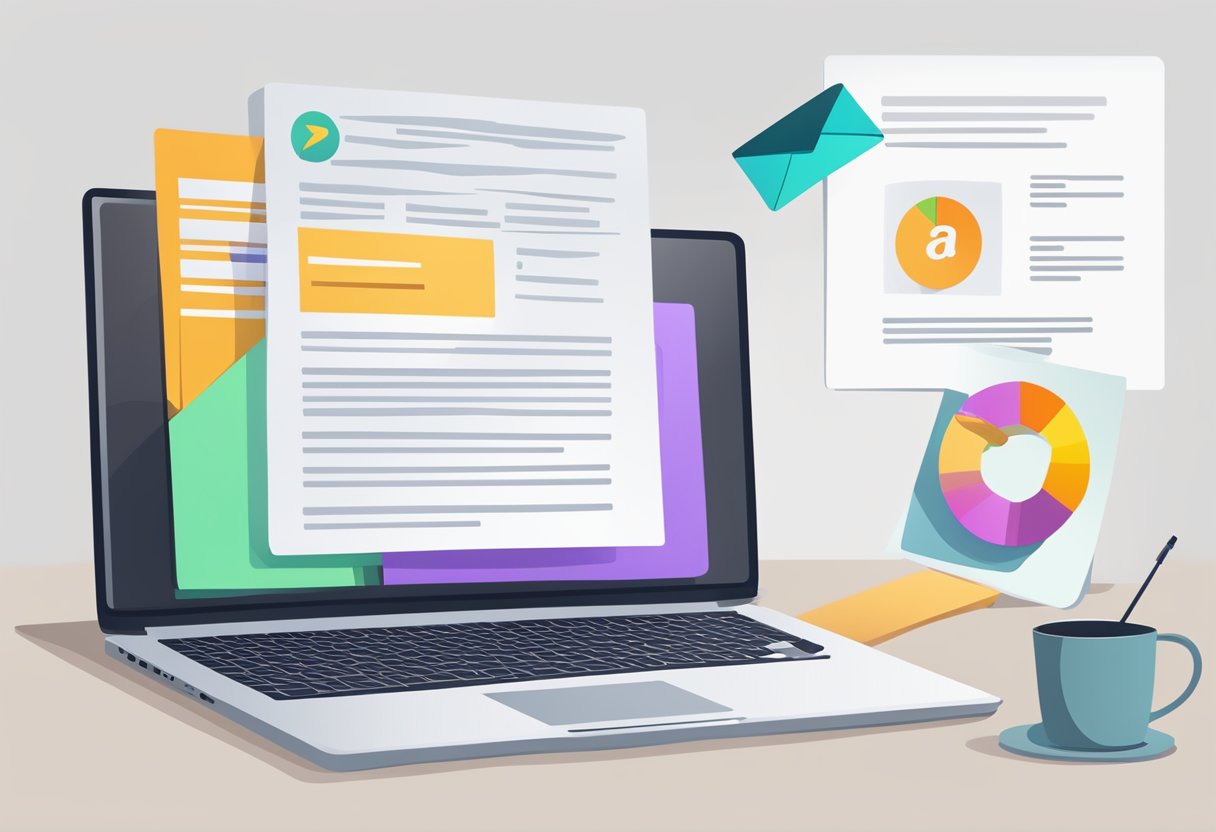
A strong cover letter should do more than rattle off your qualifications. It needs to show a bit of spark—some real interest in the role and a drive to help the company succeed. When you directly ask for an interview, you’re showing initiative, and honestly, a lot of employers love that. If you’re feeling stuck or just want a little boost, you can always Try RoboApply for free—it’s a handy way to get unstuck and polish your application.
Understanding the Importance of Requesting an Interview
Honestly, requesting an interview right in your cover letter can grab a hiring manager’s attention and help you stand out. It’s a simple move that shows you’re purposeful and confident—plus, it makes it easier for employers to spot who’s actually eager and prepared.
Why Directly Ask for an Interview
When you ask for an interview, you’re pushing the conversation forward. You’re telling the employer you’re not just interested, you’re ready to show up and talk about how you fit. Instead of just listing skills, you’re making it clear you want to discuss them in person (or on Zoom, let’s be real).
Try closing with something like, “I am eager to further discuss how my background matches the needs of your team. I would appreciate an opportunity to interview at your earliest convenience.” It’s straightforward and, honestly, hiring pros recommend this all the time. Even Work It Daily suggests being direct—it’s a smart way to get more replies.
Impact on First Impression
First impressions matter, and a cover letter is your shot. By confidently asking for an interview, you’re showing you’re motivated and professional, and you’re not afraid to take initiative. These are the things that stick in a recruiter’s mind.
Using language that’s polite but assertive really helps. For example, “I look forward to the opportunity to speak with you and discuss how I can contribute to your organization.” It’s enthusiastic but still respectful of their time. A strong close can keep your letter from getting lost in the shuffle, and honestly, might just give you that extra edge. If you’re not sure about your tone, RoboApply can give feedback on that too. Try RoboApply for free.
Strategy in the Modern Job Search
Let’s face it: job searches are fast and sometimes a bit impersonal, with all those applicant tracking systems and online forms. If you tailor your letter to ask for an interview, it shows you’re putting in the extra effort—and that’s something both bots and humans tend to notice.
There’s also tech to help you out. Tools like RoboApply can score your resume, suggest better cover letter phrasing, and honestly just save you time on sites like LinkedIn and Indeed. Try RoboApply for free if you want to make sure every letter you send actually asks for an interview and stands out in the pile.
Asking directly for an interview isn’t just about confidence—it’s about moving yourself ahead in a crowded market. It shows you’re motivated and can communicate clearly, which, let’s be honest, is half the battle.
Analyzing the Job Description and Researching the Company
If you want your cover letter to work, you’ve got to know what the employer is actually looking for. Digging into the company and figuring out who’s in charge of hiring helps you tailor your message so it doesn’t just blend in with everyone else’s.
Interpreting Key Skills and Qualifications
Honestly, read the job description carefully—line by line. Employers usually lay out what they want in bullet points or short sentences. It helps to jot down the most important skills in a table so you don’t miss anything.
| Example from Job Description | How to Address in Cover Letter |
|---|---|
| Advanced knowledge of Excel | Share a quick story about using Excel to solve a real problem |
| Strong written and verbal communication | Mention results from writing reports or leading meetings |
| Bachelor’s degree in related field | State your degree and field clearly |
Use the same words from the job post—if they want “project management experience,” say you have “project management experience.” It’s not cheating; it’s just smart.
If you want to make this even easier, there are tools that can score your resume and cover letter for specific skills—RoboApply’s one of them, and you can try it for free.
Company Values and Culture Alignment
Every company’s got its own vibe. You can usually get a sense of their values from their website, especially the “About Us” section, or even their social media. Sometimes the job description drops hints, too—words like “team player,” “innovative,” or “customer-focused” are dead giveaways.
Show them you get it. For example:
If they care about community service, mention your own volunteering.
If they want creativity, talk about a time you solved a problem in a new way.
Skip the generic “I’m a hard worker.” Instead, give examples that actually match their culture. It’s way more convincing.
Identifying the Hiring Manager
If you can, address your cover letter to a real person. Start by checking the job posting for a name. If it’s not there, poke around the company website or LinkedIn for someone in HR or the right department.
Still coming up empty? No shame in calling or emailing to ask. Only use “Dear Hiring Manager” if you’re totally stuck.
Personalizing your letter with the hiring manager’s name can help it stand out. If you can mention something about the department or a project they’re involved with—even better.
If you’re tired of hunting down names and details, RoboApply can speed things up. Give it a try for free.
Structuring Your Cover Letter for Maximum Impact
A cover letter that gets noticed is clear, personal, and focused—without sounding like it was written by a robot. The order and style of your greeting, intro, and main points can really change how your letter lands.
Effective Greetings and Headings
Start at the top: your contact info, the date, and the employer’s details.
Example:
Jane Lee
123 Main Street
Springfield, IL 62704
jane.lee@email.com
May 6, 2025
Ms. Laura Smith
Human Resources Manager
Acme Tech Solutions
456 Oak Avenue
Springfield, IL 62701
For your greeting, always use a real name if you can. “Dear Ms. Smith,” beats “To Whom It May Concern” every time. If you can’t find a name, “Dear Hiring Manager,” is your next best bet. Getting this right shows you care enough to do your homework.
Opening With Enthusiasm
That first paragraph? It needs to grab attention and explain why you’re writing.
Start by naming the job title and where you found it. For example: “I’m excited to apply for the Marketing Associate position I saw on LinkedIn.”
Say why you’re interested in the company or the job. Mention something specific—a project, a value, whatever caught your eye. A little genuine enthusiasm goes a long way.
Skip tired phrases like “I am writing to express my interest.” Use action verbs and sound like you actually want the job. If you want feedback on your tone, RoboApply is worth a shot.
Organizing Your Main Points
The main part of your cover letter should highlight two or three things: achievements, skills, or experiences that really match the job.
Break things up with bullet points or short paragraphs:
- Connect an accomplishment to the job
“At GreenTech, I led a campaign that increased web traffic by 40%, which matches your need for digital marketing experience.” - Show off a technical or soft skill
“My knack for resolving customer issues quickly boosted satisfaction scores in my last retail job.” - Tie your motivation to the company’s goals
“I’m drawn to your leadership training and see this as a perfect fit for my growth.”
Make your examples results-driven and easy to skim. If you’re struggling with structure, automation tools can help—RoboApply’s free, if you want to check it out.
Showcasing Relevant Experience and Skills
If you want to actually get interviews, you need to make it clear how your background fits what the employer needs. Real work stories and specific examples help hiring managers see you’re more than just another name.
Highlighting Work Experience and Internships
Don’t just list job titles and companies. Show what you did and what happened because of it.
For example, instead of “Worked at a store,” you might write:
- Maintained inventory for over 200 products, reducing out-of-stocks by 15%.
- Trained 4 new employees, improving team productivity.
Internships—even unpaid ones—count. Talk about projects, special tasks, or any shout-outs you got. Even something like, “Processed customer orders with 98% accuracy” from a summer gig shows you care about quality.
Selecting Specific Examples
Specifics beat vague statements every time. “Handled tasks efficiently” doesn’t tell them much. Use real examples:
- Use numbers or percentages (e.g., raised funds by $1,200).
- Mention tools or software (Excel, AutoCAD, Salesforce—you get the idea).
- Talk about teamwork (“Worked with 3 colleagues to launch new digital ads.”)
Try something like:
“During my internship at XYZ Corp, I created and managed a customer feedback system using Excel. This led to a 20% faster response time for service requests.”
Quantifiable results give employers a clear picture of your relevant experience—and honestly, that’s what they’re looking for.
Aligning Past Experiences with Job Description
If you want to catch a hiring manager’s eye, you’ve really got to connect your own experiences to what the job posting asks for. So, start by reading the job description closely—maybe even a couple times. Jot down or highlight the skills and requirements that seem most important.
After that, try to match your own background to those must-haves, and don’t be shy about echoing the actual words from the posting. For example, if they want “strong communication skills,” you might say:
“As a volunteer team leader, I organized weekly meetings to share project updates and gave presentations to over 20 members.”
The whole point is to draw a straight line between what you’ve done before and what they want now. If you’re not sure you’re hitting the mark, tools like RoboApply can help you compare your resume and cover letter to the job description and spot any gaps. Try RoboApply for free.
Crafting the Request for an Interview
Getting the tone right in your cover letter can make all the difference. The strongest interview requests use clear language, show genuine excitement, and hit the right spot in your letter—not buried, not awkwardly forced in.
Polite Yet Confident Language
When you’re asking for an interview, don’t tiptoe around it, but don’t come off as pushy either. Polite, confident language is the sweet spot. You want to sound like you believe you belong there, but you’re still respectful of their time.
Instead of something timid like “I was hoping you might consider me,” you could go with:
“I would appreciate the opportunity to discuss how my experience can help your team succeed through an interview.”
That line is confident, but not arrogant, and it’s still polite.
Some other options:
- “I look forward to the possibility of meeting with you.”
- “Please let me know if we can arrange a time to talk more about the role.”
Finding this balance can help your application stand out in a good way. If you’re struggling to get the tone right, RoboApply has tools for that too. Try RoboApply for free.
Placement of the Interview Request
It’s usually best to put your interview request toward the end of your cover letter. That’s where hiring managers expect it, and it makes your request easy to spot.
Here’s a simple way to structure things:
- Opening: Brief introduction and your interest in the job
- Body: Highlight your most relevant skills
- Closing paragraph: Politely and confidently ask for the interview
For example, you might close with:
“Thank you for considering my application. I look forward to the opportunity to discuss my qualifications further in an interview.”
Short, clear, and to the point. Most career experts agree the closing paragraph is the right place for this—see this guide.
Expressing Enthusiasm for the Role
Show them you’re actually excited about the job and the company (not just applying everywhere). Hiring managers want to see that you care about their organization and want to be part of it.
You might:
- Mention what interests you about the company
- Point out values or goals you share
- Say what excites you about the job’s responsibilities
For example:
“I am excited about the chance to bring my project management skills to ABC Corp, a company known for innovation and quality.”
Be specific if you can—don’t just say “I love your company.” Real reasons help you stand out. If you need help customizing your cover letter or showing your enthusiasm, Try RoboApply for free.
Perfecting the Closing Paragraph and Signature
A strong closing paragraph really seals the deal. It’s your last chance to remind them why you’re a great fit and show you’re genuinely interested. Make it easy for them to reach out, and leave a professional impression.
Reinforcing Interest and Value
Restate your excitement for the job and underline how your background matches what they’re looking for. Keep things positive and proactive, but don’t sound like you’re reading from a script.
“I am excited about the possibility of contributing to your team with my experience in project management and communication skills. I believe my background in leading successful projects would add value to your organization.”
Then, go ahead and ask for the interview:
“I welcome the chance to discuss my qualifications in more detail and learn more about the team at your earliest convenience.”
Stay respectful and direct. That kind of tone says you’re ready and professional. For more on this, check out Work It Daily’s advice.
Providing Personal Contact Information
Don’t forget your contact details at the end—make it easy for them to get in touch. You can do it in one line or as a simple list:
- Email: first.last@email.com
- Phone: (123) 456-7890
- LinkedIn: linkedin.com/in/yourname
Keep these after your closing paragraph so everything’s tidy. Double-check your info—typos here are a pain for everyone. If you have a LinkedIn or a professional website, add it so they can see more about you.
If you’re juggling a lot of applications and want to keep things consistent, Try RoboApply for free—it’ll help you fill in these details quickly.
Signing Off Professionally
Your signature is the last thing they see, so keep it polished. Simple closings like “Sincerely,” “Best regards,” or “Kind regards” are always safe bets. After your closing, leave a space, then type your full name. For emails, add your phone number and LinkedIn below your name.
Example:
Best regards,
Jordan Smith
(123) 456-7890
linkedin.com/in/jordansmith
Skip nicknames or anything too casual. This last step shows you care about the details—something hiring managers definitely notice.
If you want to save time and make sure your signatures look professional, RoboApply can handle that too.
Enhancing Clarity, Tone, and Presentation
Writing a cover letter that stands out isn’t just about what you say—it’s how you say it. Even little mistakes in language, structure, or formatting can make you look careless, so it’s worth the extra effort.
Using a Conversational and Professional Tone
You want your letter to sound professional, but not stiff or robotic. There’s a balance—friendly and straightforward, but never sloppy. Steer clear of slang or jokes, but don’t be afraid to let your voice come through.
For example:
- “I am excited to bring my communication skills and five years of experience to your marketing team.”
It’s direct and upbeat, but not over the top.
Career coaches say a conversational, confident, and polite tone helps you connect with hiring managers. And remember, some places (like a startup) might be cool with a little more personality, while others (like a law firm) expect things more buttoned-up.
Proofreading and Avoiding Typos
Typos and grammar slip-ups are an easy way to lose credibility. Read your letter out loud, or ask someone else to take a look before you send it.
A quick checklist:
- Check spelling and punctuation
- Watch for extra spaces or weird capitalization
- Make sure names are right
- Double-check dates, company names, and other details
Spellcheck tools are helpful, but they don’t catch everything. Taking a few extra minutes to review your letter shows you care about quality.
If you’re applying to a bunch of jobs, RoboApply can help automate proofreading and keep things accurate.
Utilizing a Cover Letter Template
Templates can take the guesswork out of formatting. The right cover letter template shows you where to put your contact info, greeting, body, and closing.
Pick a template that fits your industry. A marketing job might let you be a little more creative, while something like accounting usually calls for a traditional look. Trusted sites have templates that follow business standards and are easy to read.
If you want a step-by-step guide, MyPerfectResume has some good ones. And if you’re short on time or want to standardize your applications, RoboApply can generate templates for all sorts of roles.
Try RoboApply for free.
Following Up After Sending Your Cover Letter
Following up after you send your cover letter can boost your odds of landing an interview. It’s all about timing, showing you’re still interested, and being quick if they have questions.
Timing and Methods for Follow Up
Wait about a week or two after applying before you follow up. That gives hiring managers a chance to dig through applications without feeling rushed.
Email is usually best for follow-ups. Use a clear subject line, like “Following Up on [Job Title] Application – [Your Name].” Keep it short and polite—mention the job, restate your interest, and ask if there are any updates.
Phone follow-ups are less common, but sometimes they’re worth a shot if you haven’t heard back by email. If you call, have a quick script ready:
“Hello, this is Amanda Lee. I recently applied for the Marketing Coordinator position. I wanted to follow up and see if you had any updates regarding my application.”
If you applied through LinkedIn or Indeed, you can use their message tools or check the application status. Tools like RoboApply can help you keep track of deadlines and messages. Try RoboApply for free.
Reiterating Your Interest in an Interview
When you follow up, make sure you clearly say you’re still interested and would love to interview. Bring up one or two skills from your resume that match the job.
Be specific. For example:
“I am excited about the opportunity to join [Company Name]. My experience with data analysis and team collaboration, as listed in my resume, aligns well with your needs.”
Wrap up with a direct, polite request for an interview:
- “I am very interested in discussing how my background fits your team’s needs and would value an interview at your convenience.”
- “If possible, I would like to set up a time to talk about how I can contribute to your department.”
A message like this shows you’re proactive and serious.
Addressing Interview Questions Promptly
Sometimes, after you follow up, an employer will email you with a few questions before scheduling an interview. Reply quickly—ideally within one business day—to show you’re available and committed.
Read their questions carefully and answer clearly, using real examples from your work history if you can.
If they send multiple questions, a numbered or bulleted list keeps things neat:
- Yes, I am proficient with Excel and have used it to create detailed sales reports.
- My experience leading a team project was during my time at [Previous Company], where we completed a major launch ahead of schedule.
Quick, thoughtful responses show you’re reliable and keep the process moving. If you want to stay organized and respond faster, Try RoboApply for free—it can help manage your applications and interview messages.
Frequently Asked Questions
Using clear, direct language in your cover letter helps you show confidence and real interest. Simple phrases and a polite closing make it much easier to request an interview without sounding pushy.
What phrases can I use in my cover letter to request an interview?
You might say something like, “I’d love the chance to talk more about my qualifications,” or maybe, “I’m eager to meet and discuss how I could contribute to your team.” Another one I’ve seen is, “I hope to talk about my application with you soon.”
These sorts of lines make it clear you’re genuinely interested in the job and that you’d like to move things forward. If you want more inspiration, check out this advice on how to ask for an interview in your cover letter.
How do I incorporate a request for an interview at the conclusion of my cover letter?
Usually, you’ll want to work your request into the last paragraph. You could write, “Thank you for considering my application. I look forward to the possibility of discussing my fit for this position in an interview.”
Wrapping up with a thank you and a request feels polite and shows you’re interested. It’s a classic move, actually, and you’ll see it recommended in expert tips about cover letter closings.
What is an appropriate way to ask for an interview when emailing my job application?
If you’re emailing your application, just keep it polite and straightforward. You might say, “Please let me know if there’s a convenient time to discuss my application further.” Or maybe end with, “I’m looking forward to your response and the opportunity to interview for this role.”
It’s best to be direct, but still professional. Mention the position, say thanks, and then wrap up with your interview request.
In a cover letter, how can I express my interest in scheduling an interview without sounding too forward?
Mixing gratitude with your request usually works well. For example: “Thank you for reviewing my application. I’m excited about the chance to discuss my background with you, and I hope to hear from you soon about the next steps.”
That way, you’re showing respect for their time and not coming across as pushy. It’s confident, but still polite.
How can I highlight my enthusiasm for an interview in the closing paragraph of my cover letter?
Try something like, “I’m really enthusiastic about this role and would appreciate the chance to discuss how my skills can benefit your organization.” Or maybe, “I look forward to the opportunity to meet with you.” That keeps things upbeat and positive.
If you can, mention something specific about the company—it shows you’re genuinely interested in both the job and the place itself.
What are some tactful methods to ask for an interview while writing a cover letter for a research position?
When you’re applying for research positions, it’s key to strike a balance between showing genuine interest and staying professional. You might say something like, “I’m really looking forward to discussing how my research background could fit with your team’s ongoing projects. If there’s an opportunity, I’d love to interview and talk more about my experience.” That feels more natural, doesn’t it?
If you can mention a particular research area or project, that’s a nice touch—it shows you’ve actually done your homework and aren’t just sending the same letter everywhere. Honestly, it makes your request feel way more relevant to what the employer actually needs.
Also, there are tools out there—RoboApply comes to mind—that help tailor your cover letters for specialized roles and keep track of applications across different platforms. Not a bad idea to check it out; you can try RoboApply for free.

